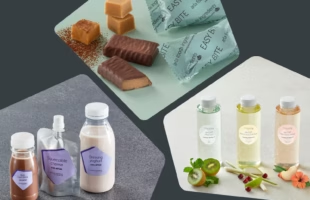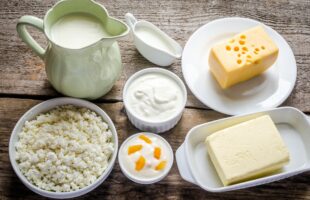
Courtesy of DDW
By Kelly Polte, Applications Scientist, DDW
When you think of confections, you most likely imagine vibrant, colorful shades. To achieve those vivid hues, confections are typically colored with synthetics, but as consumers lean more toward ‘clean label’ options, demand for switching to natural colors in confections is skyrocketing.
As you start the replacement process, you may hear things like: ‘natural colors aren’t as vibrant as synthetics’ or ‘natural colors aren’t as stable as synthetics,’ but don’t fear! Natural colors can successfully replace synthetic colors in confections. We’ll share some tips to ensure success and bust a few common myths.
Myth #1: Natural colors aren’t as vibrant as synthetics
While natural colors may require higher usage rates or care during manufacturing, they can achieve some beautifully bright shades. One reason synthetic colors appear so vibrant is fluorescence. Fluorescent substances, such as Tartrazine, or Yellow #5, absorb radiation at the UV range and reflect it, sometimes as visible light.
Luckily, some natural colors share this fluorescent characteristic. Curcumin, for example, absorbs UV light and blue light and emits back yellow light, which is why it appears like it’s glowing under a black light! Natural colors can provide that dramatic, vibrant, glowing look, so the fun doesn’t have to be compromised when switching to a natural label.
You may also need to adjust when or how you add a natural color to get the brightest shades. For example, vibrancy can be impacted by the base color of the confection – turmeric will appear bright yellow in translucent confections like gummies and hard candies, but if it’s used on panned candies, you’ll need to add a white base coating to the chocolate first to give a more reflective background and minimize visual darkness. Otherwise, the color will appear darker and more muted.
| Success Tips To achieve the vibrant, ‘fluorescent’ look, try options like curcumin, spirulina, beet, and carmine. Use a white base over darker shades whenever possible. |
Myth #2: Natural colors aren’t as stable as synthetics
While synthetics are extremely stable (which is often why companies use them), natural colors can compete – especially in confections! Many confections are in opaque packaging, which helps to prevent photodegradation, and gummies and hard candies have low water activity, which helps limit color fade. Gummies are also acidified, which is ideal for natural colors like anthocyanins and carminic acid.
One area of concern when using natural colors in confections is heat stability. Some colors are very heat stable, like anthocyanins, carminic acid, beta-carotene, turmeric, copper chlorophyllin, and caramel. But with a slight adjustment in processing, colors with lower heat stability, like spirulina and beet, can still be used. In these cases, it is often best to add colors as the sugar mixture is cooling, rather than heating. This will help to mitigate color fade from the heat exposure.
It’s also important to select the natural color that’s best suited for the type of confection you want to produce. This ensures the best stability throughout your product’s shelf life. For example, anthocyanins would provide a stable and bright red in acidified gummies but would turn purple or start to fade in confections with a higher pH, such as marshmallows.
| Success Tips To achieve the best stability, add your color at the optimal step to minimize heat-related degradation. Use the color that is best suited for your specific confectionery application. |
Myth #3: Natural colors can’t match synthetics
If you’ve historically used synthetic colors and don’t want your end consumer to be surprised by color changes, don’t worry! Natural colors can closely match synthetics.
To get a good color match, we start by quantifying the color using a colorimeter, which measures the transmittance or reflectance of light through a sample and provides measurements for different aspects of color such as: hue, saturation, and lightness/darkness. We then make up several natural blends and use visual observations to select the ones that appear to be a close match in the application and measure again using the colorimeter.
The measurements tell us if the hue values are close, which means the candies are perceived as the same color. If the lightness and chroma values are also close, that indicates the samples are very similar in terms of brightness and saturation. By looking at these measurements, we can understand the breakdown of the color and decide which components may need to be adjusted to get a closer match.
| Success Tip To achieve the best match to synthetics, use a combination of visual cues and color measurement tools like a colorimeter or spectrophotometer. |
While these are just the basics for switching to natural colors in confections, it’s a great place to get started on your natural color search. For a more in-depth look at how to replace natural colors in confections, download the webinar, Simple Label Sweets: Replacing Synthetic Colors with Natural Colors in Confections. With so many options to choose from, there’s a natural color out there that can make your eye-catching confections stand out on the shelf.
Check out our other stories in our magazine.

Kelly is an Applications Scientist for DDW, The Color House – part of Givaudan located in Louisville, KY. She has a Bachelor of Science in Food Science and Human Nutrition from Clemson University. She loves this industry because it allows her to blend her colorful, creative side with the more technical side of food science.








